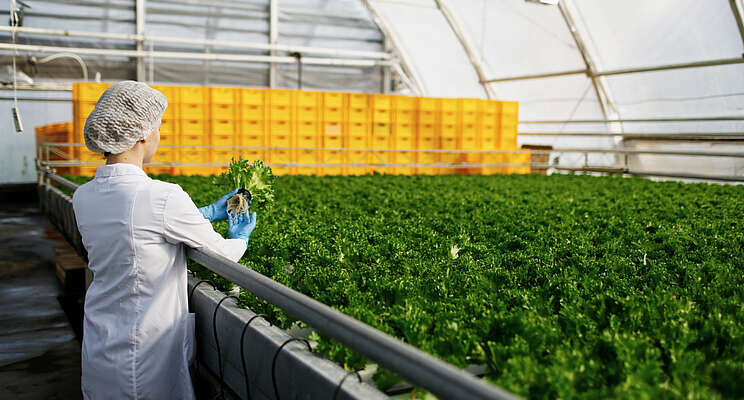Red and Far-red light: A tale of two spectrums
Added on 19 April 2022

Light affects plant growth in several different ways. In addition to promoting photosynthesis and growth (light intensity) or controlling flowering and dormancy (daylength), the light spectrum or quality can serve as a signal to influence growth and development of greenhouse crops.
Although different colors or spectra of light serve as signals for different aspects of plant growth and development, red and far-red light and the red-to-far-red ratio (R:FR) play important roles for many greenhouse crops.
Understanding red and far-red
Understanding how red and far-red light act as a signal for plants can subsequently help you understand how it is managed.
Phytochrome is a photoreceptor that senses red and far-red light. It is photo-reversible pigment, meaning that it changes forms depending on the light it senses. Phytochrome red (Pr) senses red light with a peak around 630 nm and, after sensing the red light, changes into phytochrome far-red (Pfr). When Pfr senses red light at a peak around 760 nm, it converts to Pr. There is never a time when all phytochrome is entirely Pr or Pfr; rather, the two forms simultaneously exist, and their relative proportion to one another — the phytochrome photoequilibrium (PPE) — acts as a signal to influence plant responses to light quality.
One of the most important plant physiological effects of red and far-red light on plants is their effect on stem elongation. When plants are growing in conditions with a higher proportion of far-red light, it promotes stem or internode elongation characterized as the "shade avoidance response." The phrase "shade avoidance response" comes from the fact that when plants are growing in shade created from other plants, this environment is rich in far-red light, since leaves preferentially absorb red light for photosynthesis.
In production greenhouses, there are ways environments rich in far-red light can be created. The first and most common can be when plants are grown at high densities or with close spacings. Think about the vase-like appearance of mums or the stretched stems of poinsettias when they're grown close together, compared to the more rounded and compact forms when plants are grown at lower plant densities and with more space between plants.
Continue reading.
Photo created by wayhomestudio - www.freepik.com
Source: Greenhouse Management
More news















